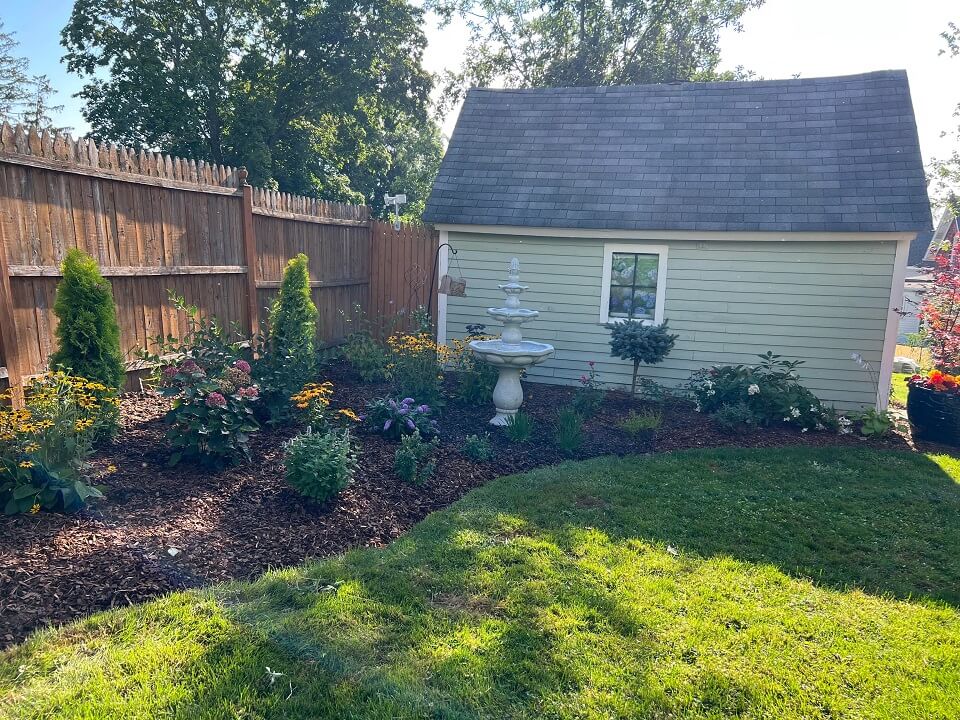There's something so satisfying about seeing your yard transform from an overgrown patch of weeds and bushes to a spruced-up native garden.
One Reddit user decided to flaunt their lawn glow-up in the r/gardening community, uploading before-and-after photos to show the massive upgrade.

"Before and after our garden reclaiming project," they said in the caption.
The before photo shows a pretty unremarkable — though very green — lawn with grasses and weeds taking over an area near the fence and shed. There's also a sizeable overgrown bush with white blossoms by the shed that looks like it wants to take over the entire building.
Needless to say, the lawn needed a little TLC.
In the second image, the lawn looks nearly unrecognizable apart from the shed and the fence. There's now a dedicated garden area where the wild grass used to be, complete with several varieties of neatly spaced flowers and shrubs, a three-tiered fountain, and a bird feeder.
The homeowner also revamped the area near the shed, eliminating the weeds, trimming the bush, and planting a small tree near the window.
In the comments, the homeowner said it only took five to six days spread out over a month to transform their yard. The hardest part is clearing the ground for new plants, but the OP said a weedwhacker, hula hoe, flat shovel, and rototiller did the trick.
If you want to rewild your yard, this Lady Bird Johnson Wildflower Center guide can help you get started. A native lawn can save you time and money on lawn upkeep since it won't need as much water or fertilizers. By switching to a natural lawn, you could save over $400 a year on water, fertilizers, and chemical controls and 175,000 gallons of sprinkler water a year.
You'll create a healthy, biodiverse ecosystem for pollinators like bees and butterflies, which also helps humans since we depend on them for our food supply. Low-maintenance, drought-resistant options like buffalo grass, clover, and xeriscaping are great ways to get your feet wet in gardening.
"Beautiful, well done! I love the curved edge of the bed. You've done a good job on your spacing, too, giving the bigger plants like the hydrangeas room to grow. Several natives in there I see, like black-eyed Susan. Lovely!" one commenter remarked.
"Incredible!…it's a little paradise," someone else said.
"Quite a transformation. Looks great!" another added.
Join our free newsletter for easy tips to save more, waste less, and help yourself while helping the planet.









